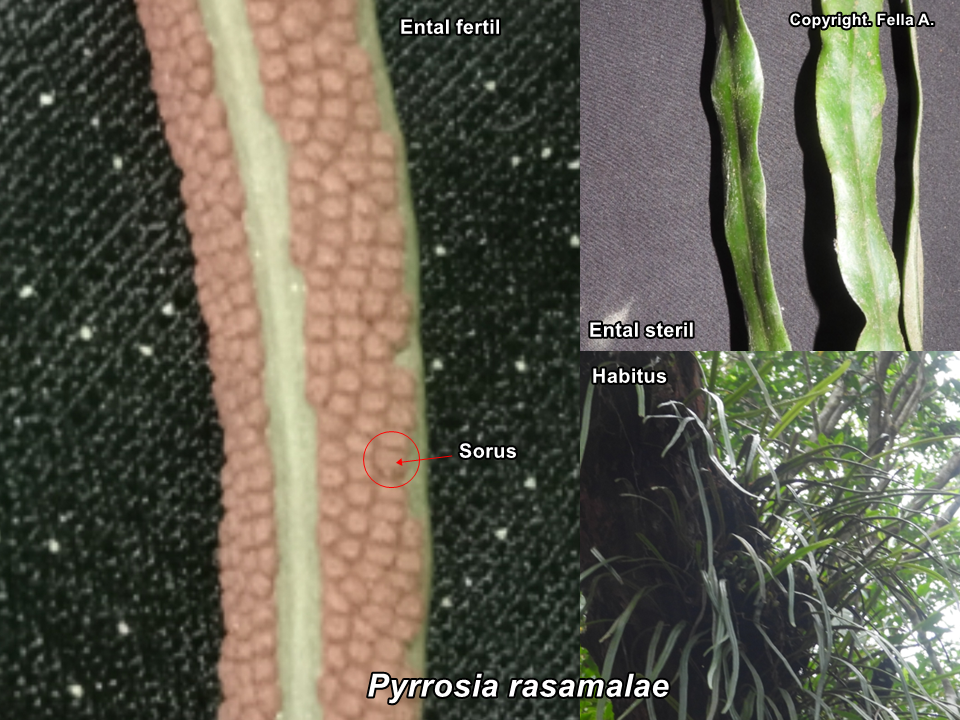Pyrrosia rasamalae
(Racib.) K.H.Shing
Polypodiaceae
Nama : Paku-pakuan.
Deskripsi : Epifit. Rimpang panjang, membentuk koloni, melekat pada kulit batang pohon inang. Ental tunggal, monomorfik; ental steril memita, menjagat, tepi pengutuh, panjang daun ca. 15−3o cm; ental fertil memita, ujung meruncing, tepi pengutuh; permukaan atas helaian hijau tua; permukaan bawah daun hijau pudar; terdapat sori pada permukaan bawah daun fertil. Sorus bulat, hijau sampai kecoklatan, tersusun padat, memenuhi sepanjang tulang daun utama mendekati tepi daun.
Ekologi : Persebaran alami dari wilayah Filipina, Himalaya Timur, Indonesia (Sumatra, Jawa, Kalimantan, Sunda Kecil), Laos, Malaysia, Myanmar, dan Thailand. Pada umumnya tumbuh epifit pada batang, dahan, dan percabangan pohon inang atau pada bebatuan. Referensi: POWO (2023).
Kegunaan : –

